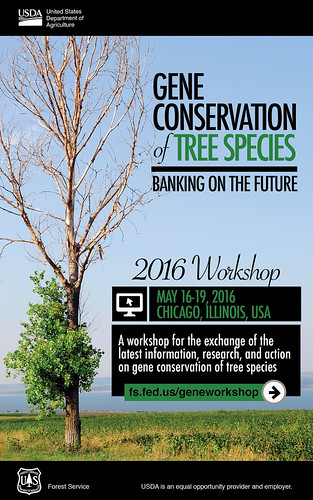
The story of Super Girl being placed in a pod on Krypton and fired off to earth to help save her cousin and at least some of her species is science fiction. But for many species the danger of extinction from climate change, habitat destruction, or invasive exotic pests is the real deal.
At an upcoming Gene Conservation Workshop experts will discuss different ways to safeguard species from climate change and other threats. For forest tree species that are experiencing rapid declines due to invasive exotic pests or climate change, long term seed storage is our best hope so that they can be returned to the wild once a control is found.
Humans have learned how to preserve vulnerable plant species from extinction, and preserve a wide range of unique individual traits found in plant genes that may help them survive in the future. You can find some of these species including white pine and ash along with a wide variety of other non-endangered plant species at U.S. Forest Service, National Seed Laboratory and Agricultural Research Service seed banks.
But the challenge is daunting. For example, blister rust on white pines in the Rocky Mountains and Emerald ash borer on ash species in the eastern US are killing the trees faster than a solution can be found.
To save vulnerable species we need to follow their propagation patterns. Seeds of most plants in temperate zones must drift some distance from the mother plant once they mature. As this often occurs during dry weather the seeds must have the ability to dry out without dying. The seeds go into stasis and drift off in their own little escape pod with an embryo safely carried in each seed.
During their journey, humid air surrounding the seed results in higher moisture content and dryer air results in lower moisture content for the seeds. Seeds will always adjust their moisture content to the relative humidity around them. Seed scientists have found that adequate drying of seeds for long-term storage occurs when the air around the seeds is at or close to 30 percent relative humidity.
If the air is more humid the biological activity in the seed increases and the seeds begin to lose viability. If the air is much dryer than 30 percent relative humidity water is removed from the seed that is needed for the structural integrity of the cells and physical and chemical damage occurs.
So, once the seeds have fully adjusted their moisture content in the ideal environment of 30 percent relative humidity, lab technicians seal them in moisture proof containers to prevent them from reabsorbing moisture should the relative humidity around them increase. Seeds that are dried adequately, sealed in moisture proof packets, and kept at 0o F, can be kept for decades without any decrease in germination and the ability to produce a new plant.
